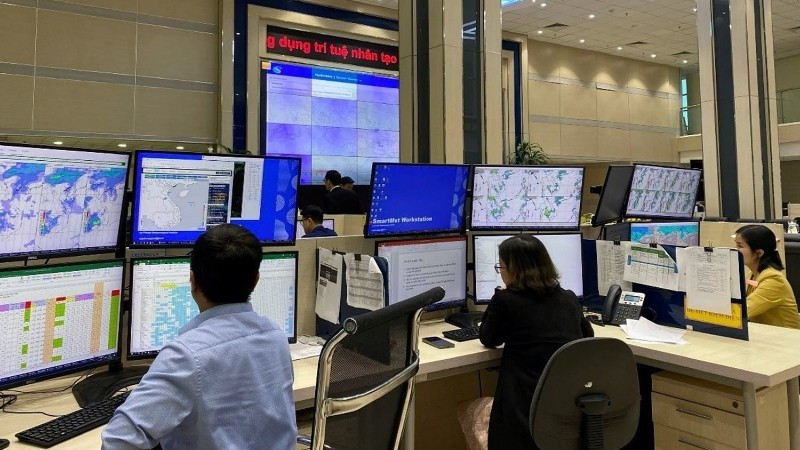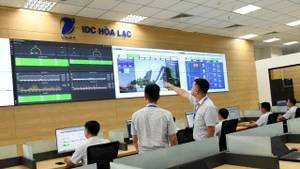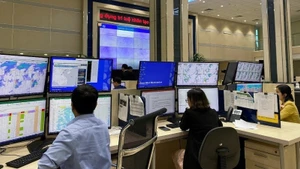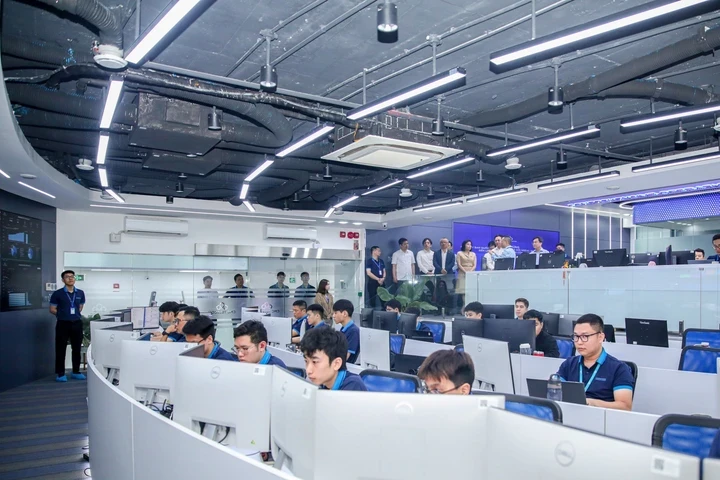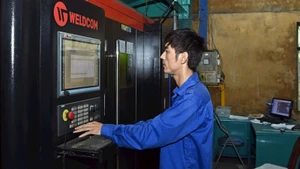Early warning is the most effective measure to reduce losses caused by weather, climate, and water-related disasters. Many studies have shown that providing warnings 24 hours in advance of a disaster can reduce damage by about 30% compared to no warning at all. Therefore, as climate change becomes increasingly complex, leading to more frequent and severe storms, heavy rains, floods, flash floods, landslides, thunderstorms, and lightning, early warning plays an ever more crucial role.
In Viet Nam, following Resolution No. 57-NQ/TW of the Politburo, the hydro-meteorological sector has been gradually applying AI, big data, and digital transformation to observation and forecasting work. Since the beginning of the year, the Viet Nam Meteorological and Hydrological Administration under the Ministry of Agriculture and Environment has implemented AI in several stages of the forecasting process. Specifically, machine learning algorithms trained on radar data, satellite images, and automatic observations have been used to provide short-term rainfall forecasts with fast response times and high detail.
For identifying and determining the intensity of storms in the East Sea/South China Sea, AI has been applied to analyse meteorological satellite images to detect cyclone centres, assess intensity, and predict storm development trends, supporting the in-depth analysis of forecasters. These systems are still being improved, further trained, and integrated into operational forecasting processes. This technology enables authorities to continuously monitor weather and environmental conditions, thereby issuing early warnings and timely response measures to protect people's lives and property.
Mai Van Khiem, Director of the National Centre for Hydro-Meteorological Forecasting, said that during this year’s storm and flood season, the hydro-meteorological sector used AI in observation and forecasting, achieving higher accuracy than with traditional tools alone.
Regarding storm forecasts, the 24-hour forecast error for storm centres is around 90–110 km, matching the regional average. AI also supports probabilistic assessment and uncertainty evaluation, aiding decision-making in disaster prevention.
In heavy rainfall forecasting, the Weather Research and Forecasting (WRF) model — a mesoscale weather modelling and forecasting system — and regional ensembles have produced fairly good results for widespread rainfall, though challenges remain for short-term localised downpours in complex terrain, where small-scale circulation interactions occur. The use of a combination of weather radar, satellite imagery, ensemble data, and nowcasting algorithms has enabled thunderstorm, tornado, and lightning warnings to be issued 30 minutes to 3 hours in advance in many key areas.
The Viet Nam Meteorological and Hydrological Administration has identified the sector’s major scientific and technological challenge as “Mastering AI technology in meteorological and hydrological forecasting, building a comprehensive AI system for multi-scale meteorological and hydrological forecasting with high accuracy and automated operations.”
MAI VAN KHIEM
DIRECTOR OF THE NATIONAL CENTRE FOR HYDRO-METEOROLOGICAL FORECASTING
According to the Viet Nam Meteorological and Hydrological Administration’s leaders, compared with countries such as Japan, China, and the Republic of Korea, Viet Nam’s forecasting capacity and observation systems remain limited. Furthermore, constrained budgets have prevented significant investment in science and technology for meteorological and disaster forecasting. In addition, information technology infrastructure remains weak, with insufficient observation stations, while AI processing in meteorology and hydrology requires substantial IT infrastructure, financial resources, and highly skilled IT professionals. High-speed processing chips, which are essential for AI computation, are also costly.
Given the complex developments of climate change and the increasing occurrence of extreme weather events, modernising the hydro-meteorological sector and enhancing forecasting and early warning capabilities are essential to protect communities and the economy. Building and improving forecasting and early warning systems is therefore considered the first line of defence in disaster prevention and risk reduction.
To achieve this goal, Mai Van Khiem stated that the hydro-meteorological sector needs to promptly implement a comprehensive reform plan to strengthen forecasting, warning, and support for disaster prevention and sustainable development. The plan’s focus is to continue effectively implementing Resolution No. 57-NQ/TW on breakthroughs in science, technology, innovation, and national digital transformation.
According to Khiem, the Viet Nam Meteorological and Hydrological Administration has identified “mastering AI technology in meteorological and hydrological forecasting, building a comprehensive AI system for multi-scale meteorological and hydrological forecasting with high accuracy and automated operations” as its key scientific and technological challenge.
Accordingly, the Administration will prioritise the application of modern technologies such as AI, big data, and the Internet of Things (IoT) across the entire meteorological and hydrological workflow — from observation, data collection and processing, to analysis, forecasting, and information dissemination. Mastery of these technologies will not only improve accuracy and automation in professional tasks but also pave the way for developing an intelligent, multi-scale forecasting system capable of meeting the needs of the public, authorities, and economic sectors in an increasingly complex climate context.
In addition, the Administration will focus on enhancing the forecasting capacity for extreme weather phenomena, developing a multi-hazard early warning system to ensure timely and accurate information; building a highly qualified workforce with emphasis on training young professionals to meet new demands; strengthening communication to raise community awareness of the role of meteorology in disaster prevention; and expanding international cooperation to leverage technical, technological, and human resource training support.
